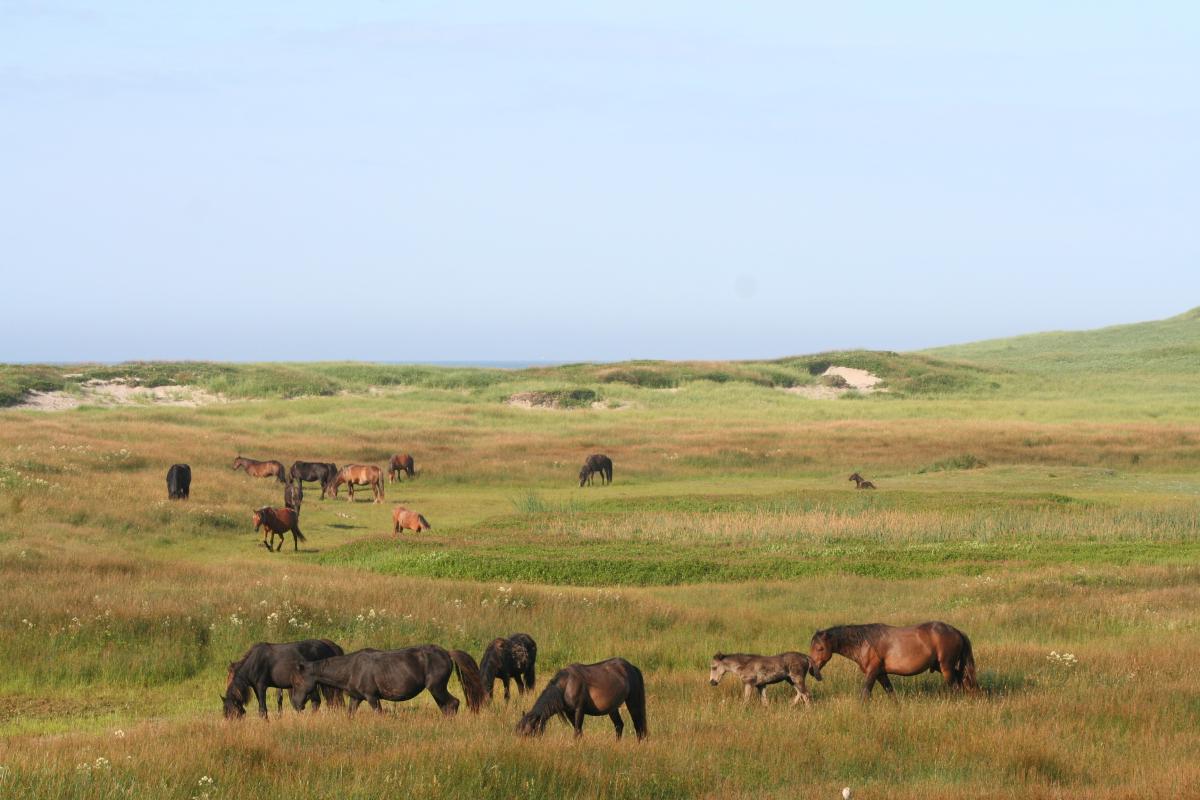Sex-ratio in wild horses
Submitted by editor on 19 May 2015. Get the paper!
Get the paper!Ecologists have long been interested in the prominent role that the sex ratio plays on population processes, including sexual selection, evolutionary trajectories, and population dynamics. As such, I (we) were interested in investing the determinants of sex ratio across space and time within populations. As part of my postdoctoral research, my (our) study focused on testing if adult sex ratio (ASR) varied across space and time, and whether such variation emerges from environmental gradients and climate fluctuations operating through local demographic factors. To accomplish this, we used a five-year dataset of animal locations, life histories and local abundances for an isolated population of feral horses (Equus ferus caballus) at Sable Island National Park Reserve, Nova Scotia, Canada (2008–2012) that stems from a larger individual-based study of the ecology and evolution of this population initiated by Dr. McLoughlin in 2007, which is modeled on the famous long-term individual based studies of red deer (Rum, Scotland) and Soay sheep (St. Kilda, Scotland). The horse population was introduced to Sable Island in the mid-1700s;, and exists free from predation, human interference (protected formally since 1961), and competition with other species (the horses are the only terrestrial mammal), providing a simplified system suitable for investigating determinants of spatial variation in ASR with minimal confounding influences. Each year, individual fates, states, group affiliations, and locations for nearly all living horses are recorded daily in summer during the breeding season. Our work here further expands upon previous work in this system on environmental gradients, habitat and resource selection, local density dependence, dispersal, sink-source population dynamics, life history, and effects of spatially varying resources on population dynamics and genetics.
